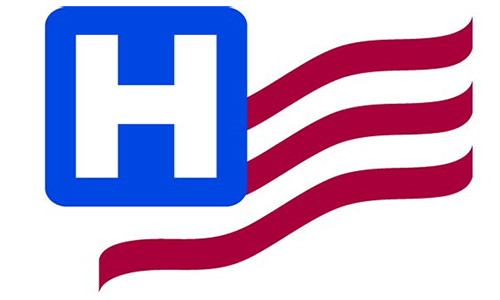Highest C-Diff Rates in US are in the Northeast
Frank Magliochetti Report
Clostridium difficile (C. difficile or C. diff) is a deadly superbug that causes severe illness, diarrhea and sometimes death in thousands of people in the United States each year. Now a study shows that infection rates of these antibiotic-resistant bacteria are highest in the Northeastern section of the nation.
 difficileinfection causes inflammation of the colon and diarrhea severe enough to be life threatening. The Centers for Disease Control and Prevention (CDC) saysC. difficile is now the most common microbial cause of hospital-acquired infections in U.S. hospitals, and that these infections cost up to $4.8 billion annually in excess healthcare costs – and that number reflects the costs for just for acute care facilities, not for nursing homes or other healthcare institutions.
difficileinfection causes inflammation of the colon and diarrhea severe enough to be life threatening. The Centers for Disease Control and Prevention (CDC) saysC. difficile is now the most common microbial cause of hospital-acquired infections in U.S. hospitals, and that these infections cost up to $4.8 billion annually in excess healthcare costs – and that number reflects the costs for just for acute care facilities, not for nursing homes or other healthcare institutions.
diffcaused nearly half a million infections in 2011, and 29,000 patients died within 30 days of receiving their initial diagnosis ofC. difficileinfection that year. C. difficile infections are usually a regional problem, as patients transfer from hospitals to nursing homes and back into the community, which allows the disease to spread.
C. Diff Rates Have Been Highest in the Northeast – for a Decade
Rates of this deadly superbug were highest in the Northeast over the last decade, according to a study published in the American Journal of Infection Control.
Researchers from the University of Texas analyzed 2.3 million cases of C. difficile infection that occurred between 2001 and 2010. They found the highest incidence of the infection in the Northeast, where about eight patients developed a C. difficileinfection for every 1,000 patients discharged from a hospital. The Midwest had the second highest C. diff infections at 6.4 infections per 1,000 discharges, followed by the South at five per 1,000 and the West at 4.8 infections per 1,000 discharges.
Deaths from C. difficile infections were highest in the Midwest at 7.3 percent and among older adults at 9 percent.
The scientists also discovered that C. difficile is a seasonal disease. Most cases occurred in the spring, infecting 6.2 people for every 1,000 discharges. Infection rates were second highest in the winter at 5.9 per 1,000, followed by summer and fall.
The rates of C. diff infections for adults and older adults followed the overall trends, with most adults developing a C. diffinfection (CDI) during spring. CDIs among children were highest in the winter.
“The peak incidence in the spring could be attributed to increased utilization of antibiotics in winter months,” explain the authors of the study. “Prior studies have found a 1 to 2 month lag time between antibiotic exposure and the development of CDI.”
Controlling the Risk of C. Difficile Infections in all 50 States
Over-prescribing and inappropriate prescribing of antibiotics raises the patient risk of CDI. About half of all patients receive an antibiotic at some time during hospitalization, according to CDC statistics, but 30 to 50 percent of antibiotics prescribed in hospitals are incorrect or unnecessary. Using proper infection control procedures and careful prescribing of antibiotics can prevent CDIs.
CDIs are usually associated with medical care; patients who take antibiotics and receive medical care are at the highest risk for aC. difficile infection.
Doctors often prescribe broad-spectrum antibiotics that kill a wide variety of dangerous bacteria. Unfortunately, these antibiotics can also kill off beneficial bacteria living in the human gut. These beneficial bacteria help digest food and boost the immune system to help protect the body against infection. Taking antibiotics can suppress these beneficial bacteria for several weeks or even months, which leaves the body vulnerable to pathogens – such as C. difficile – when the individual comes into contact with a contaminated surface or with another person with the disease. Unnecessary use of antibiotics and poor infection control increases the speed at which C. difficile spreads within a facility or between facilities when a patient transfers.
“C. difficile infections cause immense suffering and death for thousands of Americans each year,” said Tom Frieden, M.D., M.P.H, and Director of the CDC. “These infections can be prevented by improving antibiotic prescribing and by improving infection control in the health care system. CDC hopes to ramp up prevention of this deadly infection by supporting State Antibiotic Resistance Prevention Programs in all 50 states.”
Source
https://www.ncbi.nlm.nih.gov/pubmed/25952045
http://www.cdc.gov/media/releases/2015/p0225-clostridium-difficile.html
https://www.cdc.gov/hai/organisms/cdiff/Cdiff_clinicians.html
Frank Magliochetti is Managing Partner for Parcae Capital.
-
North Andover, Massachusetts
This column of posts is directed at the Healthcare Industry. Frank plans to release a new site dedicated to the industry. He currently assists companies who are building, restructuring, transforming and resurrecting there business’s. An example of his client base are, Xenetic Biosciences , IPC Medical Corp, Just Fellowship Corp, Environmental Services Inc., Parsons Post House LLC, ClickStream Corporation as well as having a business talk radio show; The Business Architect on the URBN network.

































